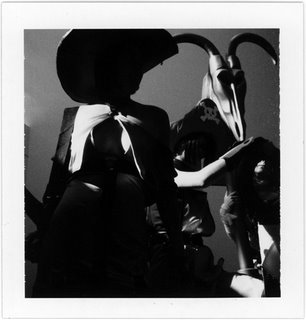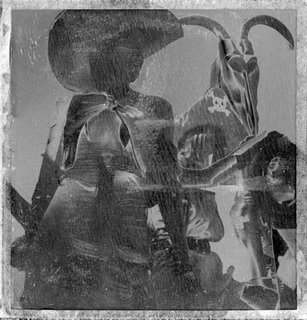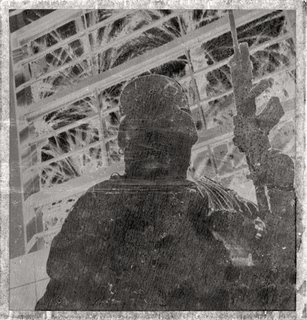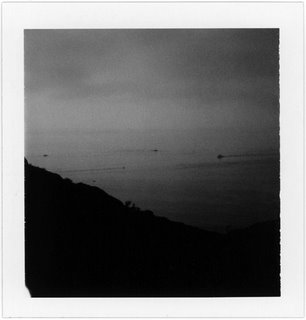
Another fun thing about Type 87 is that you actually get two images from your shot. The secret being that the second image is usually tossed. Each Polaroid has a print side:

And a "goop" side:

The goop is actually the print developer. So what you see should be some kind of a negative image. One of the neat things about this side is that, depending on how much light you expose this goop to, it will solarize the image to some degree.
You often see more detail on the goop than on the print. It is sometimes difficult to gauge exactly how long to develop your print, but, like Type 85, the 'negative' (goop) retains the original exposure of your image.
The downside to the goop print is that is takes a long time to dry ... which makes it difficult to carry around in the field. In Phoenix, the goop will dry in a few hours. My goops wouldn't dry in Los Angeles. After two days on a dresser, I had to take a hairdryer to them. And, I only managed to save two, because you can't touch them. Every mark you make on the goop stays on the goop forever. And you can actually wipe off the image. My solution was to use the old film pack case from a filmpack. It will only hold one wet goop print, but it prevents damage to the image (mostly).
Another goop image and a few more Polaroids from my trip.




I want to get to know the goop side of the skull photo... biblically. Unspeakably excellent image!
ReplyDeleteI'll can set up a date with the goop, but she doesn't come cheap!
ReplyDelete